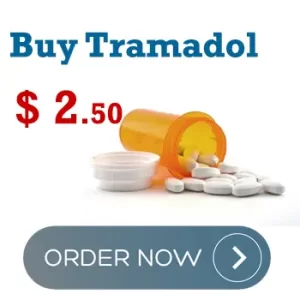Where To Buy Tramadol No Rx
 Tramadol serves as a central analgesic, designed to alleviate discomfort arising from severe injuries, surgical procedures, or advanced stages of cancer. This medication is exclusively accessible through prescription.
Tramadol serves as a central analgesic, designed to alleviate discomfort arising from severe injuries, surgical procedures, or advanced stages of cancer. This medication is exclusively accessible through prescription.
The primary active ingredient in Tramadol is Tramadol hydrochloride. Classified within the group of opioid agonists, this compound targets specific receptors within the central nervous system (CNS), subsequently diminishing pain sensitivity. Tramadol is recognized as a dual-action analgesic. The medication is offered in various formulations for both localized and systemic application.
Notably, Tramadol tablets are also available in dosages of up to 200 mg, imparting an extended duration of effectiveness.
How to Take Tramadol
This medication is prescribed for the relief of symptoms and should be employed in concise treatment periods. The specific dosage and treatment schedule hinge upon the patient’s age and physical state:
- Oral Solution: For patients aged 14 and above, the prescribed dosage is 20 drops combined with a teaspoon of water or sugar, taken once daily. If necessary, a subsequent intake can occur after 1-2 hours. Children under 14 should consume 1 mg per kg.
- Tablets and Capsules: Ingest these with water, either before or after meals. The daily dosage is typically 50 mg, but in cases of acute pain, it can be escalated to 400 mg.
- Subcutaneous, Intramuscular, or Intravenous Injections: Dilute the contents of ampoules in saline prior to administration. Daily dosages range from 50 to 400 mg. Allow 4-6 hours between injections.
- Rectal Suppositories: Use one suppository 1-4 times daily.
For elderly individuals afflicted with renal or liver dysfunction, it is advised to reduce the Tramadol dosage by half.
Tramadol Use Indications
This medication is employed to alleviate and alleviate pain stemming from various sources, including:
- Physical traumas: such as dislocations, fractures, severe burns, and soft tissue injuries.
- Aftermath of surgical interventions.
- Painful invasive diagnostic procedures.
- Advanced-stage cancer.
- Myocardial infarction.
- Neurological manifestations.
Tramadol, available in the forms of injections, pills, capsules, and suppositories, is suitable for adults and children aged 14 and above. Tramadol in drop form is suitable for patients from the age of 1.
Mechanism of Tramadol
Upon entering the bloodstream, the principal active ingredient of the drug binds to diverse opioid receptors present in the brain and spinal cord. Consequently, the production of pain neurotransmitters diminishes, and nerve conduction slows down.
This outcome leads to a reduction in pain intensity, partly attributed to Tramadol’s interaction with gastrointestinal receptors. The medication inhibits activity in both cerebral hemispheres, inducing a calming impact. Additionally, it curbs the reflex for coughing and influences the respiratory center.
Tramadol’s action becomes evident within 15-20 minutes and endures for up to 6 hours, contingent on the severity of pain. Among the various forms, the injection solution proves most efficacious. Prolonged use of Tramadol may lead to a decrease in its analgesic effect, necessitating dose escalation.
The drug undergoes metabolic processes within liver tissues and is partially excreted unchanged via the kidneys. In patients with cholecystitis, hepatitis, hepatosis, and other liver disorders, the half-life of Tramadol could extend beyond 2 days. During this period, the drug continues to exert its influence on the body.
Tramadol Adverse Effects
The utilization of this drug can potentially induce sensations of dizziness, sluggishness, excessive sleepiness, decreased appetite, and nausea. In rare instances, side effects that might arise due to overdose include:
- Impairment in motor coordination.
- Accelerated heartbeat (tachycardia).
- Experiencing visual or auditory hallucinations.
- Diminished respiratory function.
- Onset of vomiting and diarrhea.
- Abdominal discomfort.
- Skin itching.
The intoxication from the drug could manifest as urinary retention, cognitive confusion, loss of consciousness, cardiovascular collapse, and seizures. In females, prolonged usage of the medication might result in disruptions to the menstrual cycle. It’s important to acknowledge that protracted consumption of the medication could lead to the development of drug dependence.

